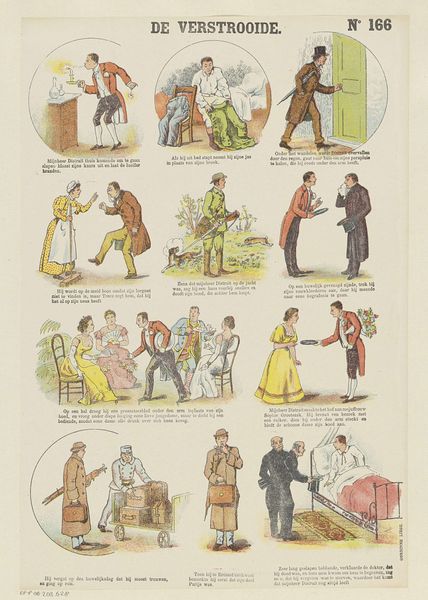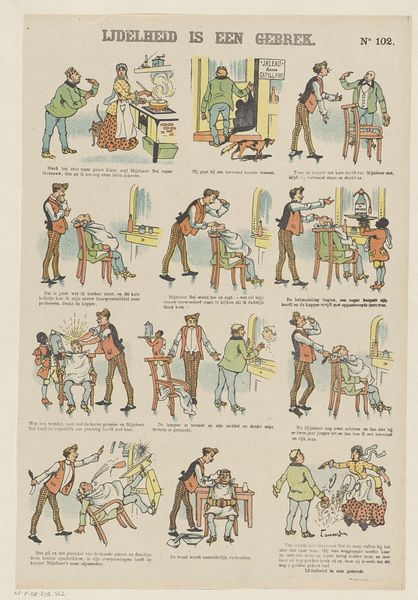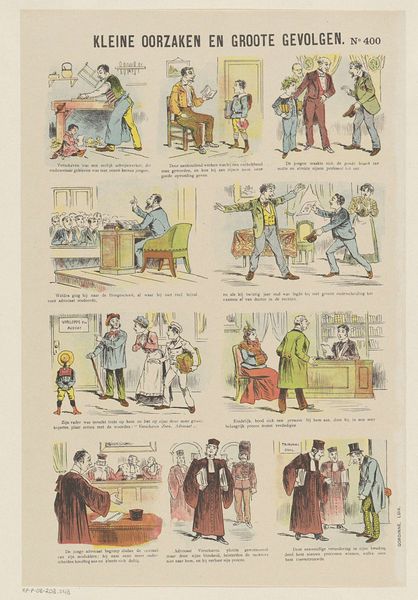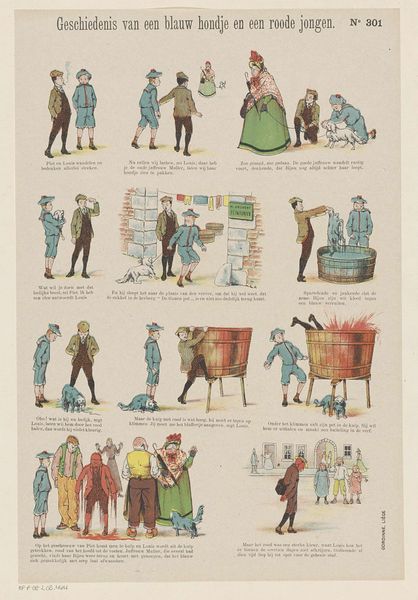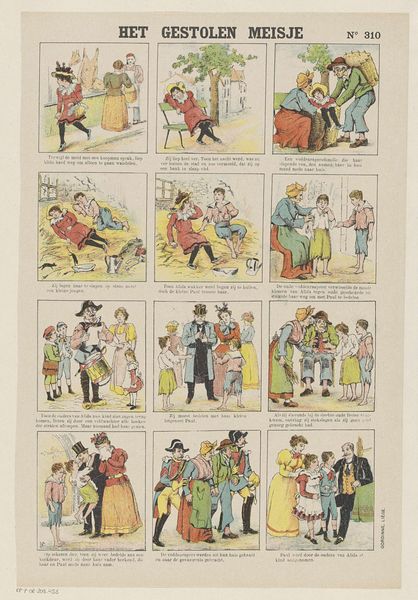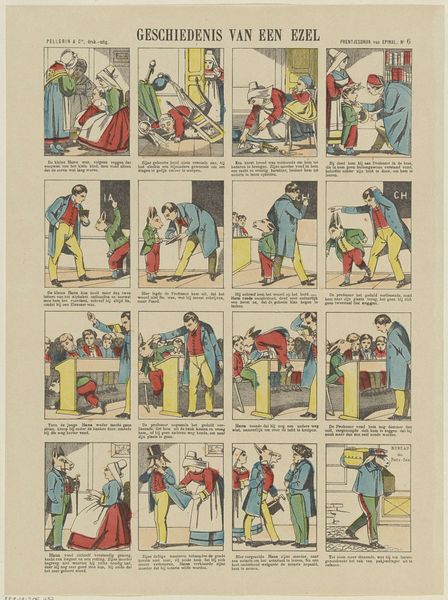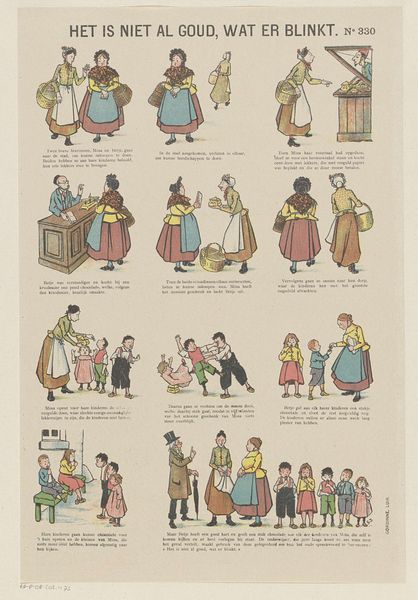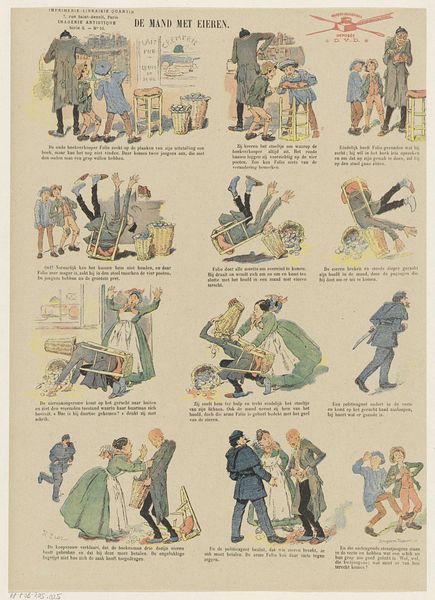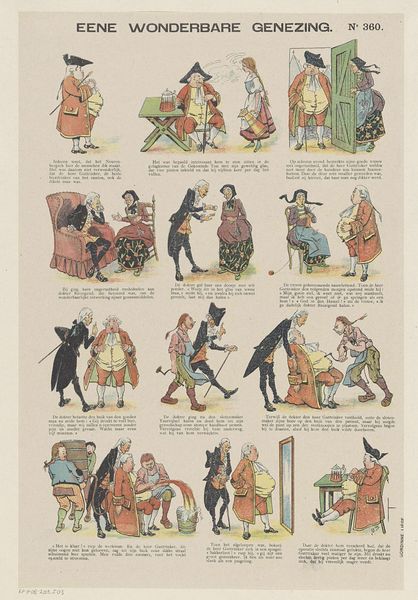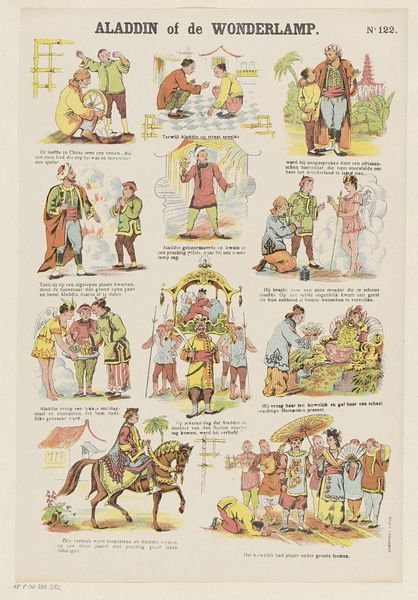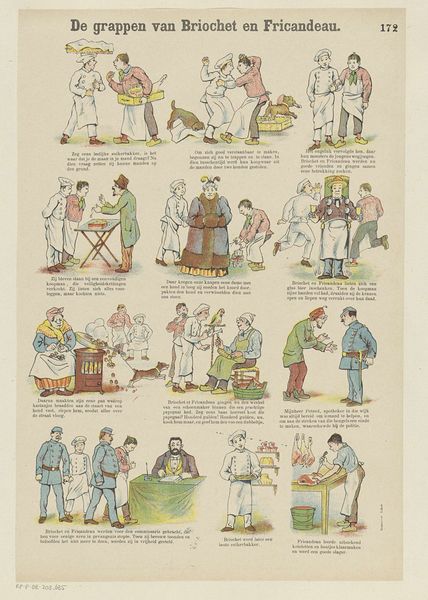
drawing, print
#
drawing
#
comic strip sketch
#
comic strip
# print
#
traditional media
#
personal sketchbook
#
child
#
sketchwork
#
comic
#
sketchbook drawing
#
genre-painting
#
storyboard and sketchbook work
#
sketchbook art
Dimensions: height 400 mm, width 269 mm
Copyright: Rijks Museum: Open Domain
Curator: This delightful comic strip, entitled "De ezelsooren," which translates to "Donkey Ears," was created by the monogrammist G.J. sometime between 1894 and 1959. It’s rendered in a charmingly simple style. Editor: My first impression is one of gentle mischief. The color palette feels nostalgic, the figures stiff and doll-like. It tells a story through clear, sequential images. Curator: It speaks, I think, to the intersection of childhood and social expectation. Each panel seems to depict a transgression, a small act of defiance or mistake for which the young protagonist, Lucas, is likely reprimanded. The rigid poses also signal, to me, the restrictive social structure present at the time it was published. Editor: Visually, I'm drawn to how repeated elements create cohesion. Look at the color of Lucas's suit; that vibrant blue unifies the otherwise diverse panels, it brings a through-line for this narrative. Also the body language—how slumped the adults become, defeated at his mischief— it reflects burdens and disillusionment, too. Curator: Absolutely. The imagery of "donkey ears" as a symbol of foolishness has a long history in Western culture, reflecting broader societal anxieties around knowledge, education, and conformity. This piece seems to be commenting on the ways in which children are often pressured to fit into pre-defined molds. Editor: In several panels there is use of very potent iconography. I see apples and the act of exchange–the transfer between knowledge and greed–and those books piling higher and higher until he cannot move under their weight. What cultural anxiety that represents! Curator: The very fact that such minor missteps and behaviors are documented like this suggests how societal pressures regarding respectability shaped the behavior and outlook of that historical moment, how moral virtues have changed over time, and perhaps the universal and ongoing struggle to balance expectation with individual identity. Editor: Seeing the story unfold panel by panel through such well-considered visual shorthand makes me more aware of my own reactions, I must admit, and how easily symbolism triggers response. Curator: Agreed; considering this art piece offers insights not just into artistic techniques but the ways children navigate society at large, a message relevant in any generation.
Comments
No comments
Be the first to comment and join the conversation on the ultimate creative platform.


